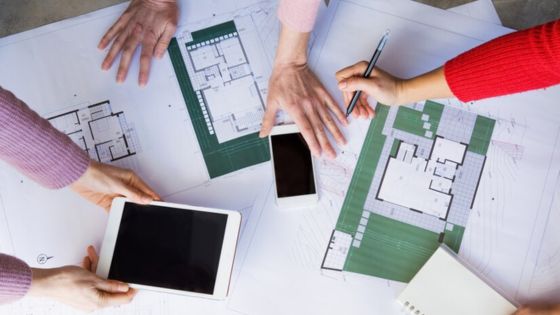Concrete has been an important part of building for many years. It’s strong, long-lasting, and can be used in many ways. But like all things, it can break down over time and become uneven. In the past, fixing this issue was very costly and challenging.


However, there’s a new alternative—concrete lifting—that makes fixing concrete easier. Concrete leveling is changing how people fix foundations and repair buildings. Understanding the process, its advantages, and areas of application will illustrate why this process creates more stable, functional, and aesthetically appealing structures.
What Is Concrete Lifting?
Slab jacking, or concrete lifting, corrects uneven concrete surfaces. It’s done by drilling small holes into the sunken slab and injecting a grout mixture below it. This mixture fills the gaps and returns the slab to its original position.
There are two primary techniques for raising concrete: traditional mud jacking, which involves using a slurry of cement, sand, and water, and polyurethane foam injection, which uses expanding foam to raise the concrete.
Both methods offer effective solutions for sunken driveways, sidewalks, patios, and foundations. However, polyurethane foam injection has become more popular because it’s lighter and cures faster.
The Need for Concrete Lifting in Modern Architecture
Modern architecture uses a ton of concrete surfaces and structures that might settle or move with time. Thus, modern construction requires regular concrete lifting to maintain strength and aesthetics.
Moreover, pavements are more strained in cities with continuous construction and heavy foot traffic. They can easily develop cracks, settle unevenly, or sink, making them dangerous and unattractive. Additionally, changes in temperature, underground water movement, and soil erosion can affect the stability of cement bases. In such cases, opting for concrete lifting is often the most efficient way to fix your damaged concrete slab without resorting to full replacement. This approach can not only restore safety and usability but also extend the lifespan of existing structures.
Because of this, many architects prefer concrete lifting as opposed to demolition; which would require more money to buy new materials and wait for them to be delivered before starting construction afresh.
Benefits of Concrete Lifting
Concrete lifting delivers various benefits that satisfy the objectives of contemporary architecture. To begin with, it’s cheaper than the traditional way of replacing concrete. Raising and leveling the existing slab reduces the necessity for new materials and laborious demolition, significantly saving costs.
Secondly, this method isn’t very intrusive. Small holes are drilled on the surface, so they don’t cause much disturbance around them. It’s therefore appropriate for buildings in use or places with high human or vehicular traffic where extensive construction would disrupt many activities.


Another advantage of concrete lifting is its speed. While conventional methods may take days or weeks to complete a project, raised slabs can often be ready for use within hours of being worked on. Quick turnaround times are crucial for businesses operating from such premises and public facilities that can’t afford to remain closed for long periods.
Furthermore, slab jacking provides an eco-friendly alternative to concrete replacement. Reusing existing concrete significantly reduces the environmental impact of manufacturing, transporting, and installing new concrete. This sustainability aspect is increasingly important in modern architectural design, where eco-conscious practices are highly valued.
Aesthetic and Functional Improvements
Uneven and cracked concrete surfaces can significantly detract from a property’s visual appeal. Concrete lifting restores these surfaces to their original condition, enhancing the overall look of the structure.
Functionally, lifting and leveling concrete surfaces eliminate tripping hazards, ensuring the safety of pedestrians and reducing liability for property owners. If you’re seeking this solution, search for “slab jacking near me.” You’ll quickly find local services to address these concerns effectively, ensuring safety and visual appeal.
Challenges and Considerations
Despite its many advantages, lifting concrete can have issues. The first problem is finding why the concrete has settled. Factors such as soil type, moisture, and previous construction practices can cause settling. An expert needs to look at the problem to find the best way to lift the concrete and keep it stable.
Using foam to lift concrete works well, but not always. How well the foam works depends on the soil and moisture; thus, picking the correct lifting method for the site is essential.
Keeping the lifted concrete in good shape also matters; you need to check it often and fix any new settling or cracks right away as this helps the repair last longer. It’s equally crucial that property owners know how to keep an eye on the concrete so issues don’t happen again.
Future Trends in Concrete Lifting and Architectural Design
As technology advances, the future of concrete lifting looks promising. The efficiency and effectiveness of this process are continually being improved upon through advancements in materials and methods used during construction. For instance, new polyurethane foam formulations are being developed to enhance durability and performance under different environmental conditions.
Integrating concrete lifting with smart building systems is also becoming popular. To achieve this, sensors and monitoring systems are embedded in the structures so that they can send real-time data about their condition. Such information will help predict settling problems at an early stage.
Moreover, there’s a growing need for sustainable architectural designs that promote eco-friendly concrete lifting practices. This will minimize environmental hazards caused by concrete repair.
Conclusion
Concrete lifting has changed how buildings are designed and maintained. The method is cost-effective and environmentally friendly, meeting some of the goals of modern architecture. As technology advances and sustainability remains a priority, concrete lifting will undoubtedly play a crucial role in the future of building design and preservation.
- 119shares
- Facebook0
- Pinterest119
- Twitter0
- Reddit0



